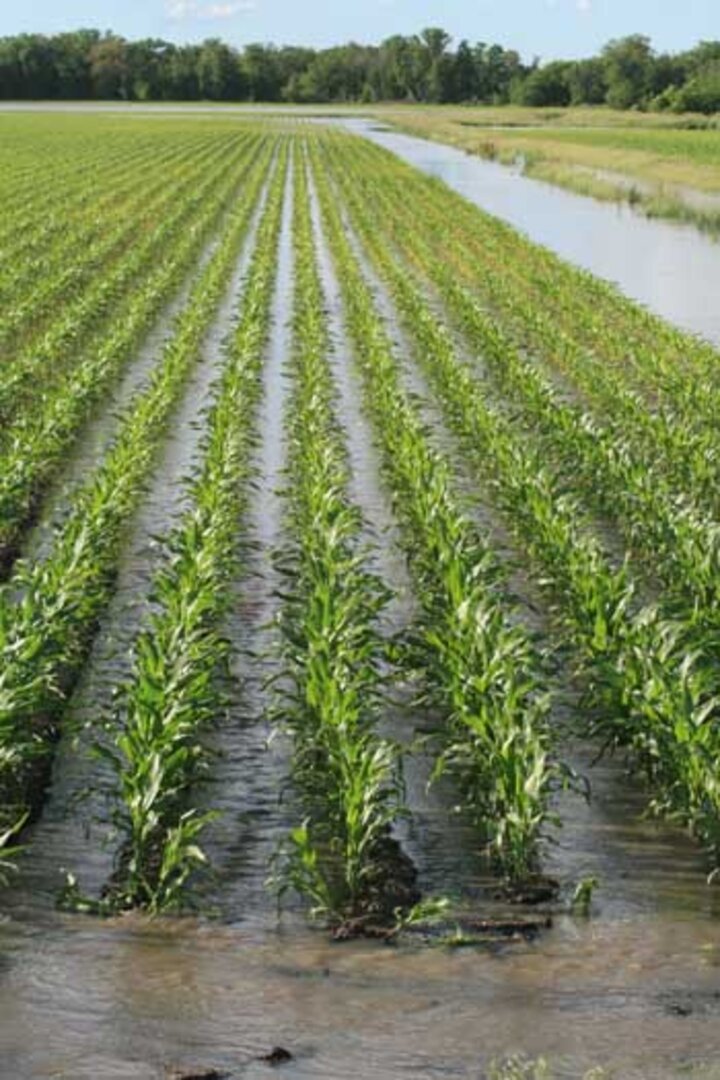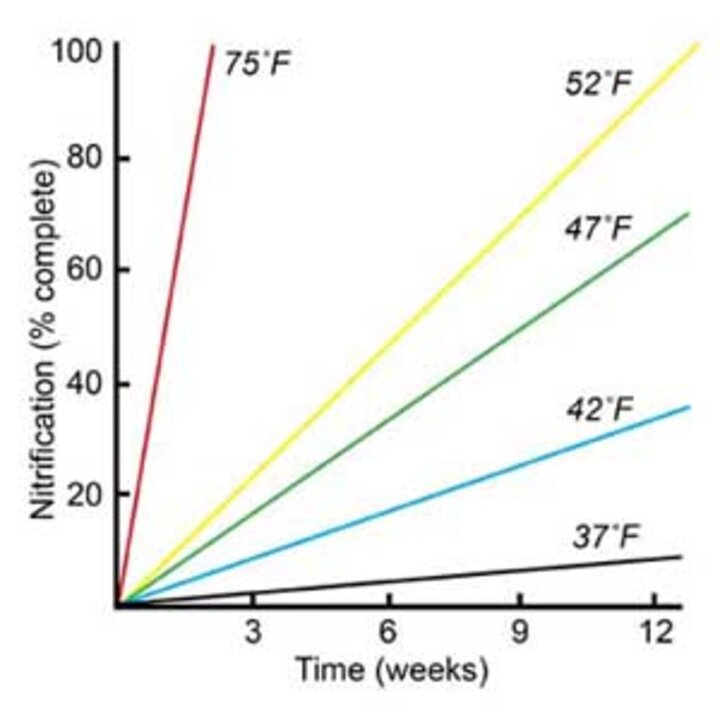June 20, 2008

Recent, significant rainfall in parts of Nebraska has raised questions about the availability of nitrogen (N) fertilizer applied for corn this spring - with good reason. Some fields may have experienced significant nitrogen loss. There are several factors which will influence the amount of loss, including rainfall amount and intensity, soil texture, soil temperature, fertilizer source and application date. Loss pathways can include runoff, denitrification and leaching.
Runoff
If fertilizer had been recently applied to the soil surface, without incorporation or gentle rain of an inch or more to move N into the soil profile, substantial N loss may occur in runoff. Rainfall has been very intense in some areas, with significant erosion. This eroded topsoil carries away fertilizer nutrients and may reduce soil organic matter levels and the soil's ability to mineralize N from organic matter throughout the growing season.
Denitrification
The primary N loss mechanism from saturated, fine-textured soils may be denitrification. This is the process of anaerobic bacteria in soil converting nitrate-N into gaseous forms (nitric oxide, nitrous oxide, dinitrogen) which can be lost to the atmosphere. In fields where most of the fertilizer N was applied prior to planting, two and one-half to three months ago, most or all of the fertilizer N will have converted to nitrate by the microbial process of nitrification. This nitrate is then susceptible to loss via denitrification or leaching.
Leaching
If nitrogen existed in soil in the nitrate or urea forms, significant leaching loss may have occurred, more-so on coarse-textured soils. Both urea and nitrate are highly water-soluble, and will move through soil with water, while the ammonium form of nitrogen is held by cation exchange sites in soil clays and organic matter, and will not leach. Nitrate-N may have leached deep enough into the root zone to be unavailable to the crop, at least early in the season. Continued precipitation or irrigation may leach this N out of the root zone entirely.
| Table 1. Potential nitrogen loss from saturated soils, depending on air temperature and duration of saturation. | ||
|
Time |
Temperature |
N Loss |
|
days |
degrees F |
percent |
|
5 |
55 - 60 |
10 |
|
10 |
55 - 60 |
25 |
|
3 |
75 - 80 |
60 |
| Denitrification loss will be less with soils having less than 1% organic matter. | ||
Figure 1.
| ||
Management Options
Unfortunately, there are many variables interacting to influence the potential for N loss from heavy rainfall, making it difficult to estimate how much fertilizer N has been lost, and if producers should apply more fertilizer. Figure 1 and Table 1 can be used to help derive rough estimates of potential loss. If soils have remained saturated for a week, perhaps 10-20% of the nitrate N has been lost to denitrification, with additional loss due to runoff or leaching. Whether remaining N will be adequate to optimize yield potential depends on the initial application rate and growing conditions during the rest of the season.
Soil Tests. Soil sampling is one option to evaluate how much fertilizer is left, but results may be difficult to interpret. If N fertilizer has been broadcast, Iowa State University guidelines for the presidedress nitrate test (PSNT) may be useful. For PSNT analysis, 16-24 samples are collected to a depth of one foot within the area of interest, typically no larger than 40 acres. A nitrate-N concentration of 25 ppm or higher at sidedress stage (V6-V8) is considered adequate. If the nitrate-N concentration is less than 25 ppm, 8 lb N fertilizer per acre is recommended for every 1 ppm below 25 ppm.
For example, if the PSNT is 15 ppm nitrate-N, the suggested supplemental N rate is 80 lb/acre (25-15 = 10 ppm; 10 x 8 = 80 lb/acre). If N fertilizer has been applied in a band, such as with anhydrous ammonia, many samples will be required to provide a full assessment of what the plant has access to. Samples collected to a depth of three feet in one-foot increments may provide more information about the amount of N available, and its distribution in the root zone.
Field Assessment.Carefully monitoring the crop for N status is another option, primarily between now and silking. Most corn hybrids will take up the majority of their N requirement in this period. The growing crop will present a better picture of integrated N availability from the soil than a soil sample.
Visual observation for signs of N deficiency (lower leaves yellowing, inverted V yellowing pattern of leaf tips) is one option, although yield potential may be reduced by the time N deficiency is visible.
A chlorophyll meter may be useful in detecting N stress before it can be seen. To calibrate chlorophyll meter readings, it is best to have one or more reference strips in the field with N applied at a rate high enough that yield would not be limited. A reference strip can be useful in assessing N sufficiency visually and from aerial photographs. For more information, see the UNL Extension NebGuide, Using a Chlorophyll Meter to Improve N Management (G1632).
Richard B. Ferguson
Extension Soils Specialist
